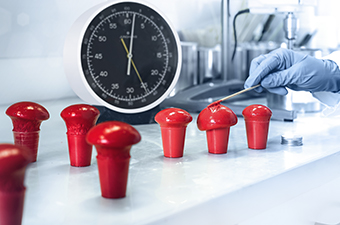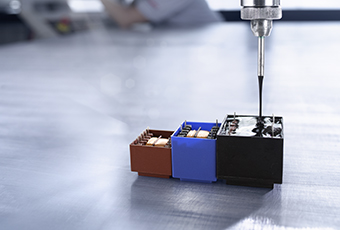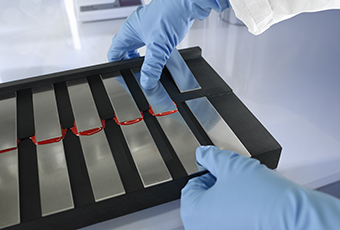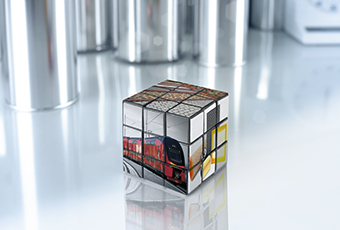
Versatile and flexible
Polyurethane (PU) is a versatile plastic and exhibits a wide range of material properties and characteristics depending on the starting materials selected. Foamed, soft, elastic, hard or brittle – PU can be used in a whole host of applications in all kinds of industries.
PU is the result of a polyaddition reaction between the hydroxyl groups of the polyol (multivalent alcohol) and polyisocyanate.
Polyol (component A) + isocyanate (component B) = polyurethane
The exothermic polyaddition reaction can be influenced to a significant extent by the polyol and isocyanate components selected, but also by using specific additives.
When manufacturing foam gaskets, for example, water is used as an additive in the polyaddition reaction. The water reacts with the isocyanate in a secondary reaction, which releases carbon dioxide and causes the material to foam.
Raw materials are also added to casting materials. The aim here, in contrast to foams, is to achieve a harder texture.
PU adhesives are based on polyols and isocyanates that react to form an elastic adhesive. Additives can be used to bring about specific changes, making the adhesive very hard or soft and elastic.
In rare cases, claims are still made that processing and using PU is harmful to health. However, a toxic, harmful effect only occurs under specific conditions. There is no risk of cancer, as long as the MAC (maximum allowable concentration) is complied with.
This is confirmed by the Senate Commission of the DFG (German Research Association): In all measurements to determine the MDI content at RAMPF, the result was always below the maximum allowable concentration – up to 100 times lower in some cases.
Processing PU products is therefore safe, subject to proper application and use of personal protective equipment (safety goggles and suitable gloves).
The impressive flexibility of PU’s properties enables RAMPF Advanced Polymers to offer a wide range of two-component PU-based systems under the RAKU® PUR brand.
The product portfolio includes liquid and thixotropic sealing systems, electro and engineering casting resins, casting and bonding systems, and hotmelt adhesives.






